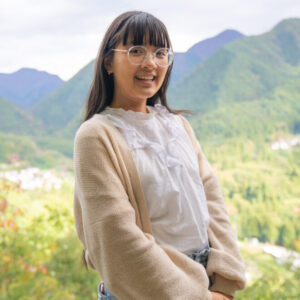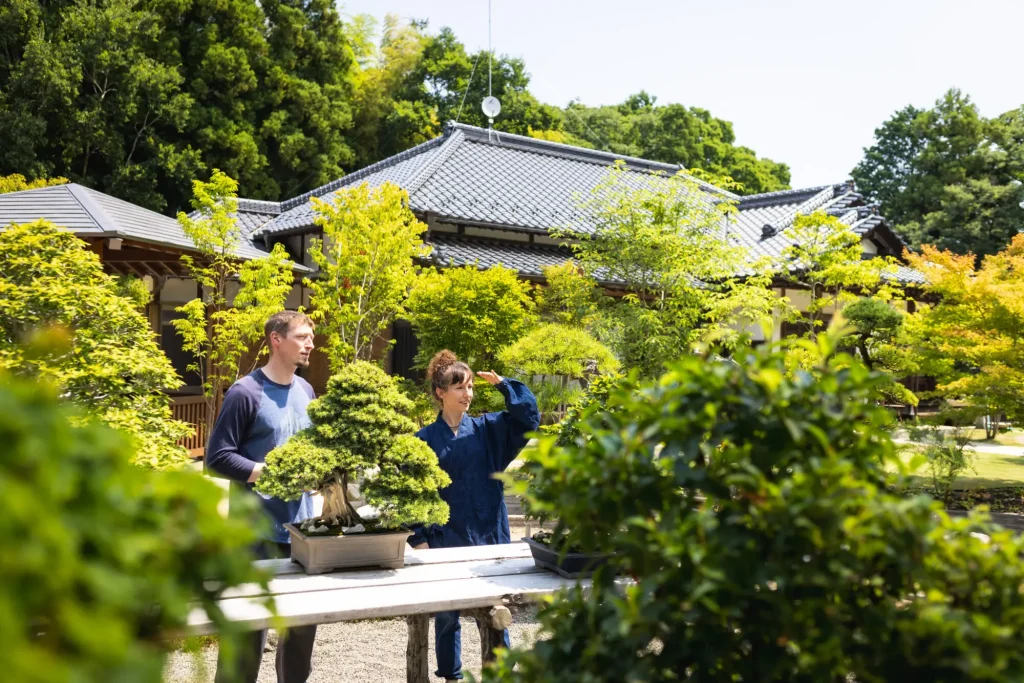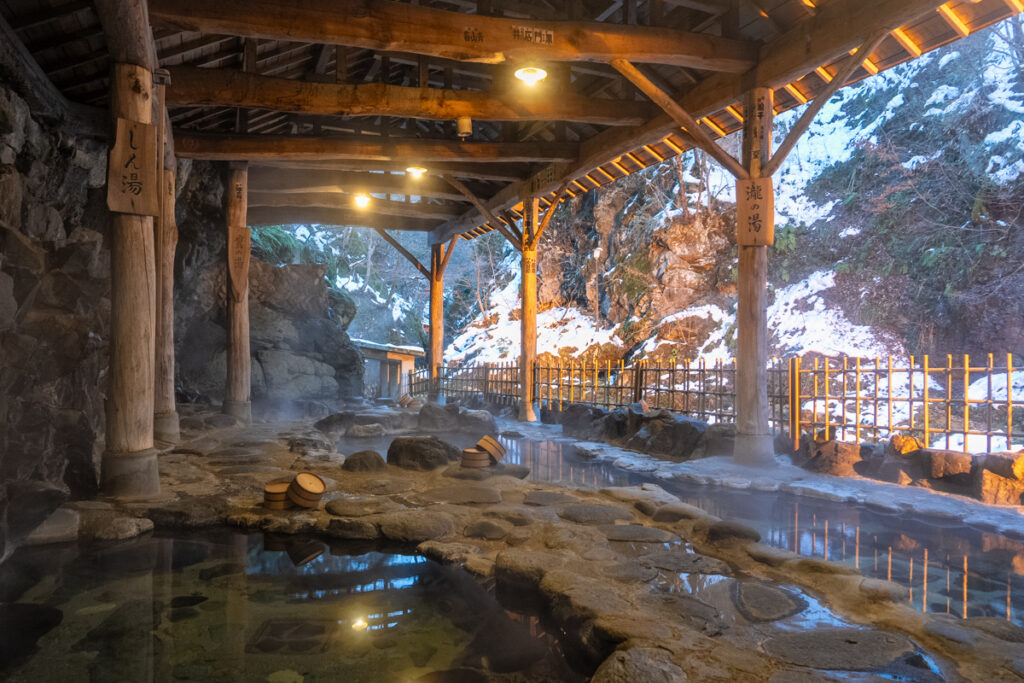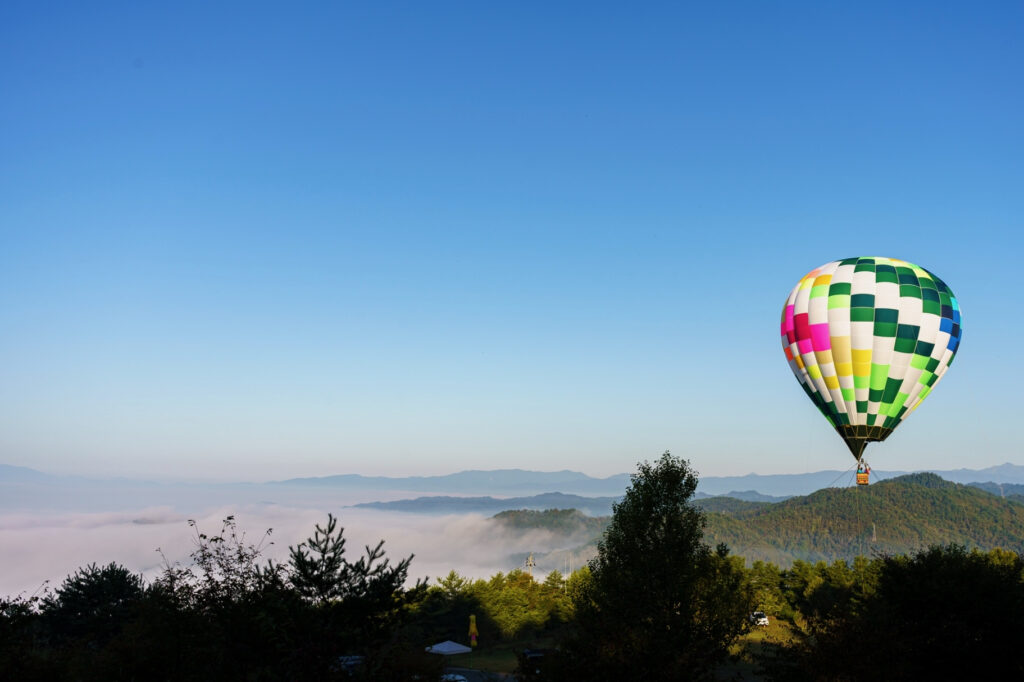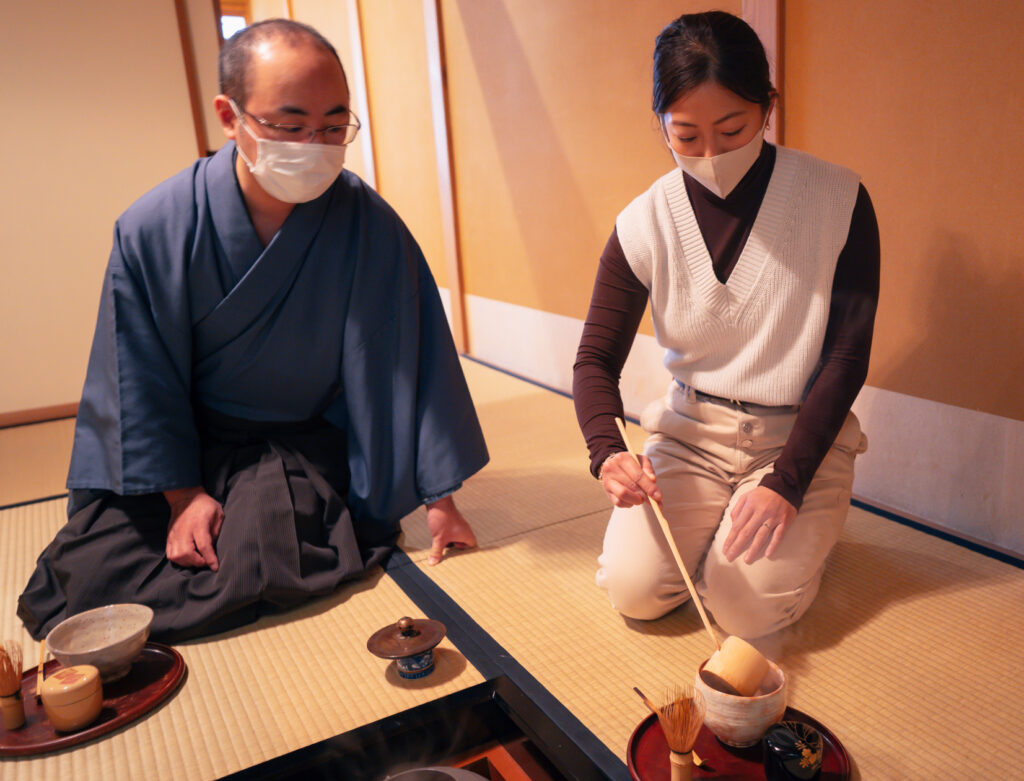Looking at the lightly snow-covered pavement, I step out onto the main street of Yamagata city. I am surprised that only this small amount of snow has stuck, despite the large amount it was snowing last night. It is a small city, especially compared to the likes of Tokyo or even its neighbouring Sendai city, but it is somewhere I have called home for nearly four years now. It has a quiet, laid-back bustle that I appreciate, similar to my home town of Canberra.
When you think of traditional, cultural Japanese experiences, maybe tea ceremony or making wagashi Japanese sweets spring to mind. Despite living here for so long and being able to understand Japanese, I had never known these things were so close to my doorstep. And I think, if I never knew about these things, how would tourists, bound by time and language barriers, know about them? Luckily, we offered some guests to do these experiences with us.
Even in the midst of winter, our first stop, a Japanese sweets wagashi shop, is walkable from Yamagata station. The shop itself looks new, as it had renovations done quite recently. There are many types of wagashi to choose from, and for someone who doesn’t know much about them, it can honestly be overwhelming. However, the staff are kind and are happy to help with any questions, and it is exciting to try new, different kinds of food.
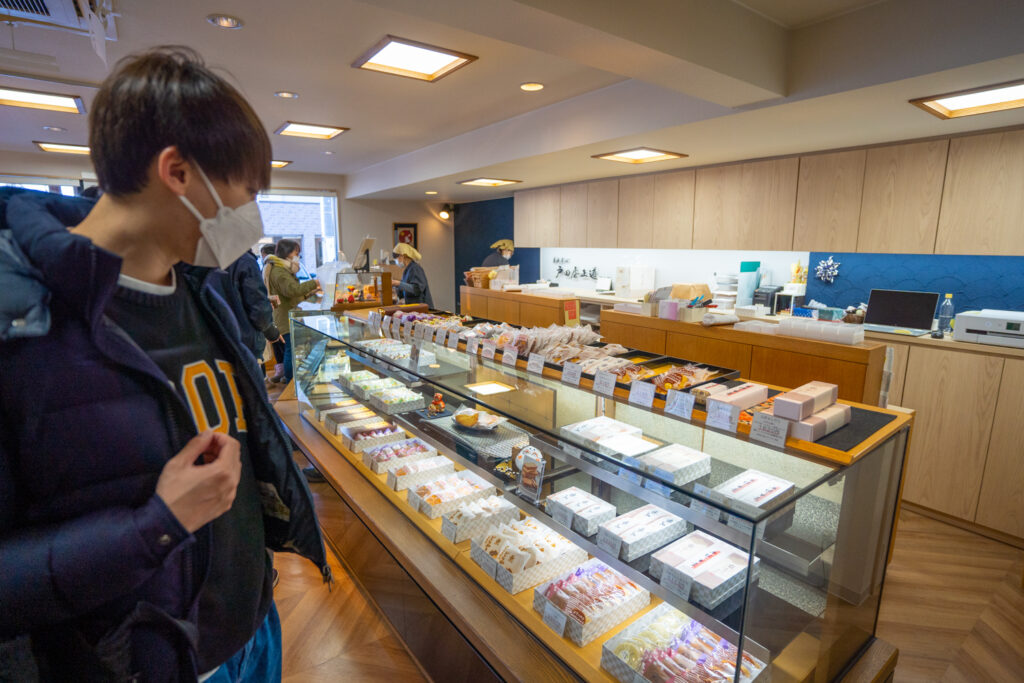
This shop in particular is different from other typical wagashi shops- according to the current wagashi master and owner of this store, his ancestors had studied in Europe for some time and after returning to Japan, their wagashi changed by adding western influences; for example, they use whipped cream in some of their products!
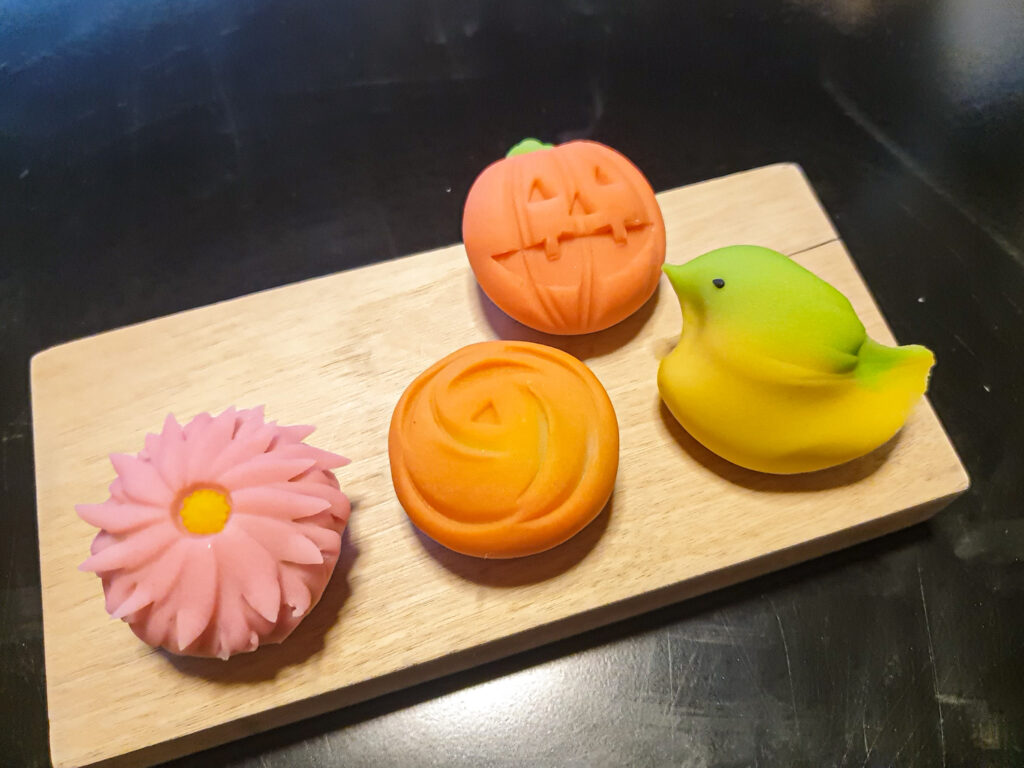
Although influenced by the west, this store still creates traditional wagashi, which I had the opportunity to help create today. We created namagashi, the standard type of wagashi typically paired with tea, in the shape of an adorable sakura cherry blossom. The atmosphere of the room where we crafted felt very authentic, as we used their Japanese-style tatami tea room above the store.
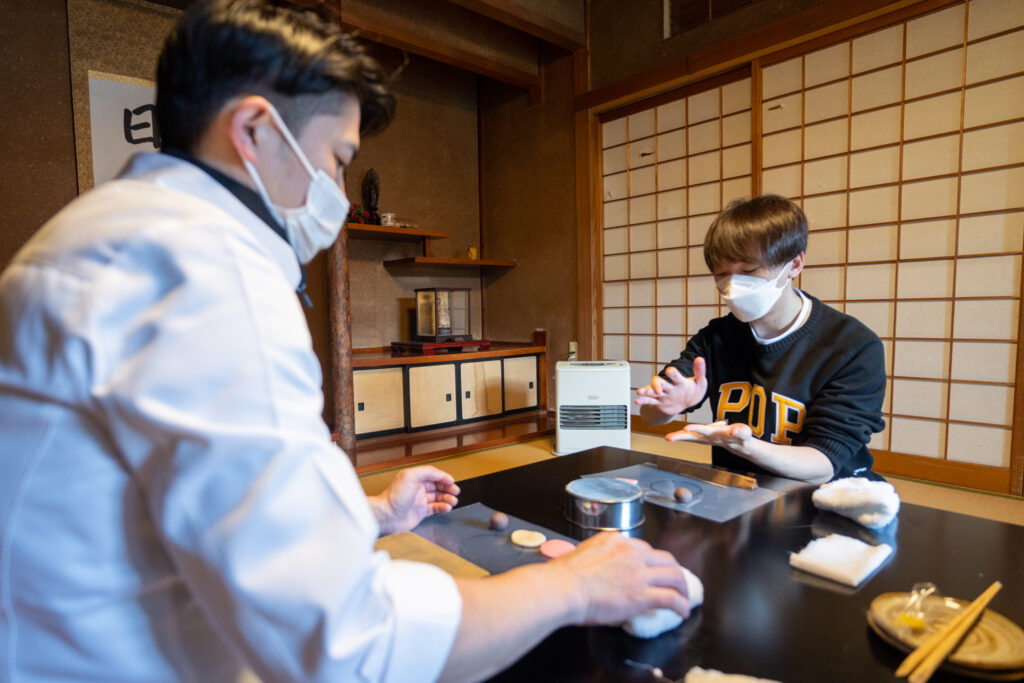
The thought and techniques behind each sweet was outstanding. Some of the techniques the wagashi master introduced looked easy, but in reality some were very difficult to do. To give a specific example, he demonstrated a difficult technique using scissors similar to thread-cutting scissors to create petals of the wagashi chrysanthemums – a wagashi sold for over 5000 yen per sweet! The wagashi master mentioned these gorgeous sweets used to be sold a lot for wedding presents, made to be more of a decoration rather than a food (even though it is delicious!) but nowadays not many people buy them in favour of other wedding gifts. I think it would be a lovely gift for anyone!
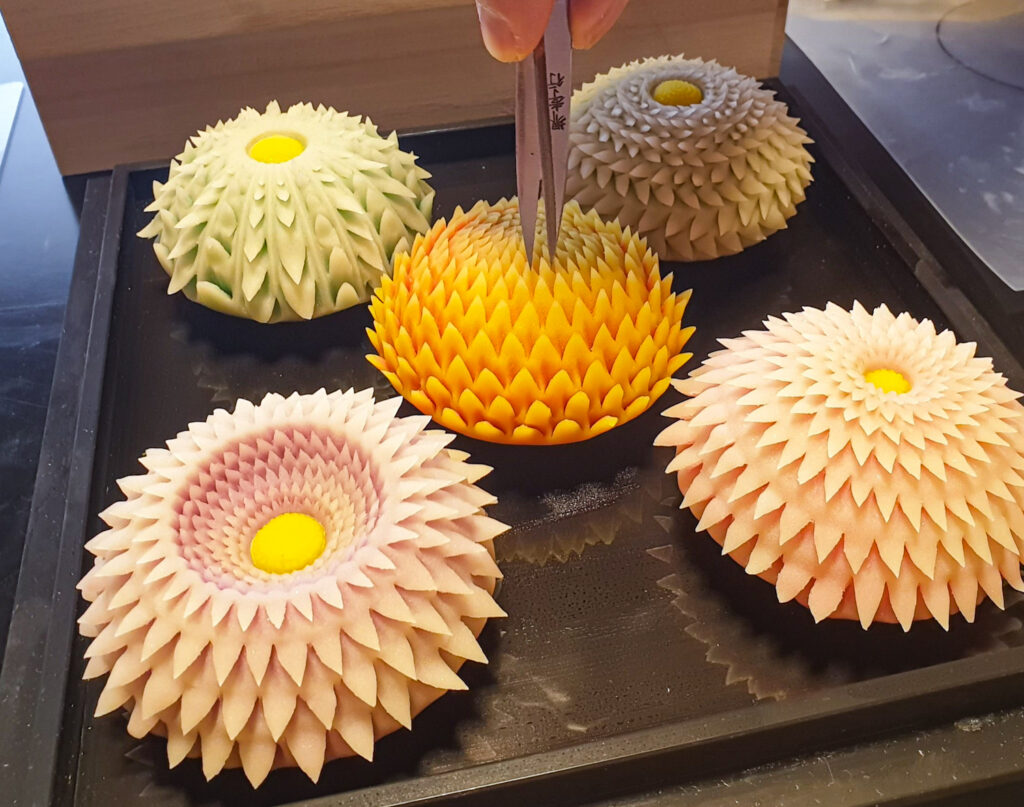
After leaving the wagashi store, we headed to a place close by which specialises in Urasenke-style tea ceremonies. As you enter the store, it feels like you are transported to historical Japan. The doors framing the fall of the snow in the picturesque small Japanese garden and the tea wares and interior design of the building gave off the feeling of traditional Japan which I never knew existed in Yamagata city.
As we went to the second floor to enter the tea room, the tea master guided us through each thoughtful movement of the tea ceremony, from the moment we entered the room. Since the new year just passed, the tea room was subtly decorated with new-year decorations, with even the tea bowl having a design of celebration for the new year, using reds and golds. It being winter, the hearth in the tea room floor was being used, with a pleasant incense-like smell filling the room.
Having the tea master explain the order of each step of the tea ceremony was helpful for those who have not experienced tea ceremony before. The prepared wagashi the tea master provided and the tea prepared by him were delicious, the bitterness of the tea balancing perfectly with the tea foam and the light sweetness of the wagashi.
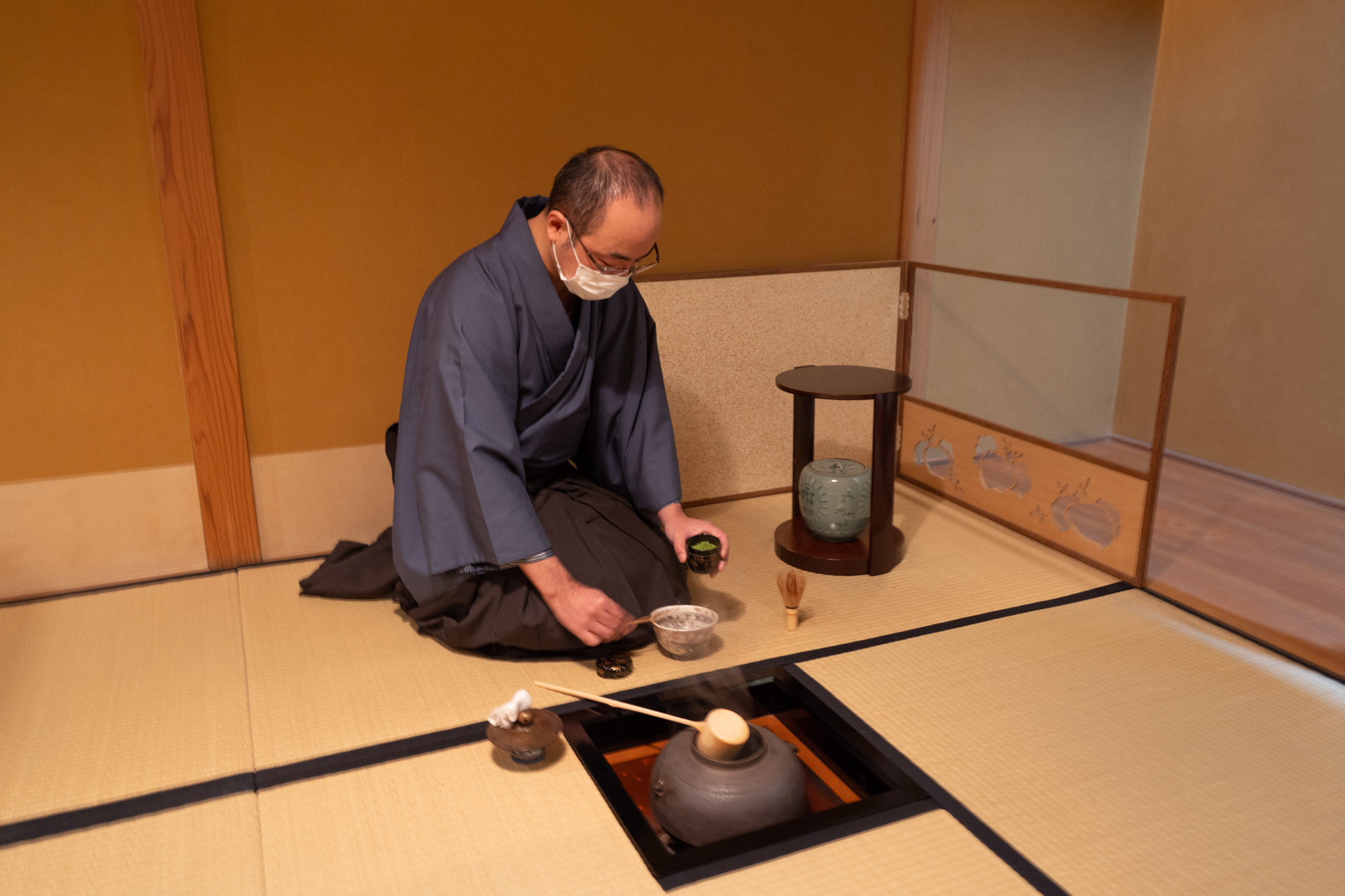
After the tea ceremony, we were guided by the tea master to make our own tea. Personally, the way to handle the tools was a bit difficult. Getting the ratios of tea to water right was hard too, but with the help of the tea master the flavour turned out well. The tea master praised my foaming skills with the tea whisk; I tried really hard to make it well so I felt accomplished. Our guests also enjoyed trying their hand at preparing the tea.

